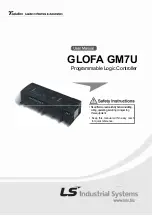
Device Security
321
SLAU356I – March 2015 – Revised June 2019
Copyright © 2015–2019, Texas Instruments Incorporated
System Controller A (SYSCTL_A)
2. The payload is transmitted through BSL into a free space in Bank 1 of the main flash memory of the
device.
3. The boot override command SEC_ZONEx_UPDATE is sent. See
for details on boot
overrides.
4. The boot code reads the boot override command and checks for the authenticity by comparing the
SEC_ZONEx_UNENC_PWD from the payload against the value that was provided during IP Protected
secure zone setup.
5. The boot code performs the update if the passwords match.
6. The status of the update is indicated in the ACK field of the specific command in the boot-override
mailbox.
5.8.5.4.2 Encrypted Update: IP Protected Device
The encrypted update of an IP protected secure zone is similar to the encrypted update of a device with
JTAG and SWD lock enabled.
A data setup phase is required before using of the Encrypted update (see
). The password must
be the same as the password used when enabling the IP Protected secure zone in the boot-override
mailbox (SEC_ZONEx_UNENC_PWD).
1. This password is appended to the end of the firmware or data to be updated.
2. The payload is encrypted through an AES-CBC operation.
3. The encrypted payload is now transmitted through BSL into a free space in Bank 1 of the main flash
memory of the device.
4. The boot override command SEC_ZONEx_UPDATE is sent. see
for details on boot
overrides.
5. The boot code reads the boot override command, decrypts the encrypted packet, and verifies the
authenticity by comparing the SEC_ZONEx_UNENC_PWD from the decrypted packet against the
value that was provided during IP Protected secure zone setup.
6. The boot code performs the update if the passwords match.
7. The status of the update is indicated in the ACK field of the specific command in the boot-override
mailbox.
5.8.6 Boot Overrides
Applications running on MSP432P4xx devices can initiate boot overrides. Boot overrides are special boot
modes in the system, in which the application can send a command to the device boot code, and those
commands are executed during boot. The following are the main uses of boot overrides:
•
Setting up device JTAG and SWD lock.
•
Setting up device IP protection.
•
Factory reset the device to remove all security definitions and erase flash main memory.
•
Setting up factory reset configurations in the device.
•
Setting up BSL configurations in the device.
Boot overrides can be initiated using either:
•
JTAG and SWD
•
The flash mailbox
shows the general boot-override flow for the JTAG flash mailbox.
















































